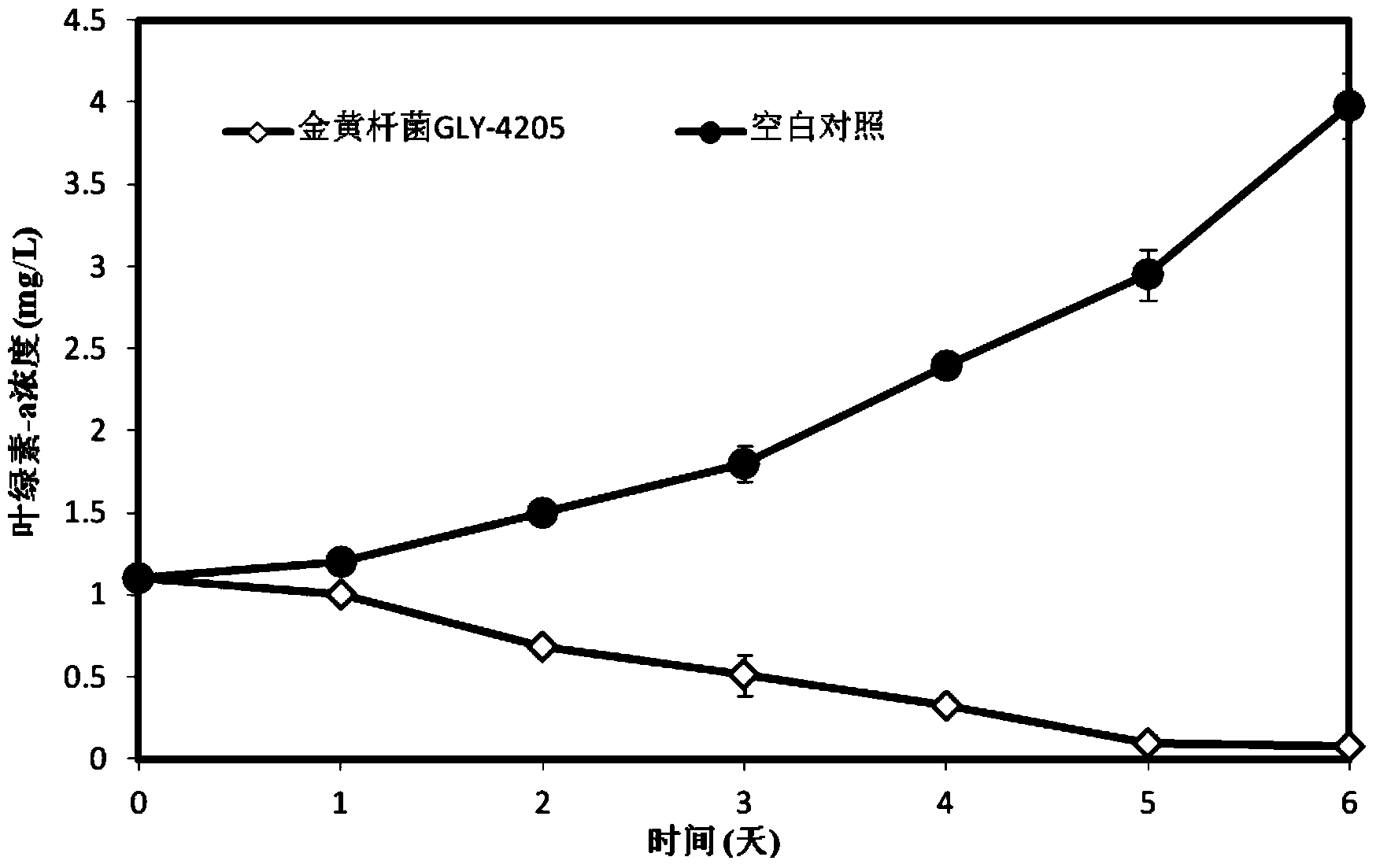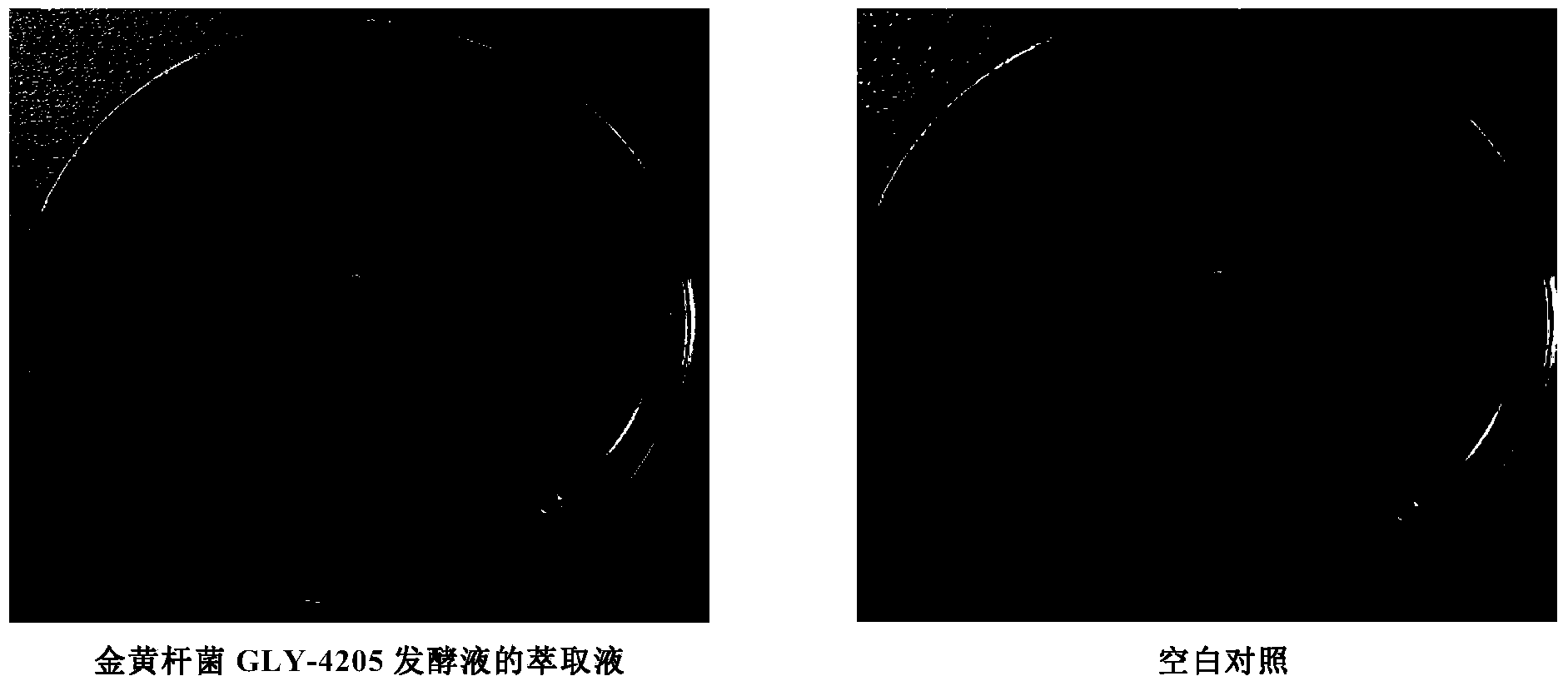Algicidal Chryseobacterium sp. and its application in cyanobacterial bloom control
A technology of Chryseobacterium aureus and cyanobacteria bloom, applied in the field of environmental microorganisms, can solve problems such as limited processing capacity and secondary pollution
- Summary
- Abstract
- Description
- Claims
- Application Information
AI Technical Summary
Problems solved by technology
Method used
Image
Examples
Embodiment 1
[0043] Example 1 Screening of algae-lytic bacteria
[0044] Add 2mL of natural water samples collected from the Meiliangwan waters of Taihu Lake to 98mL of algae liquid of Microcystis aeruginosa 9110 in the logarithmic phase. Two days later, take the yellow algae liquid and use the gradient dilution method to coat the beef extract peptone medium agar plate and culture at 28°C. After 24 hours, take a plate with a moderate colony density, and select different strains according to the different colony shapes.
[0045] The screened strains were inoculated into 10 mL of beef extract peptone medium, cultured at 28°C and 220 rpm for 24 hours, and 2 mL of cultured bacterial liquid was added to 98 mL of algae liquid of Microcystis aeruginosa in logarithmic phase. In addition, 2 mL of sterilized beef extract peptone medium was also added to 98 mL of algae liquid as a control. All the algae fluids of the experimental group and the control group were cultured in the light incubator for 4...
Embodiment 2
[0050] Identification of embodiment 2 Chryseobacterium aureus GLY-4205 bacterial strains
[0051] GLY-4205, which has the strongest algicidal effect, was identified by morphological observation, staining, physiological and biochemical reactions, and 16srRNA gene sequence analysis. ~4.0 μm, after 24 hours of shaker culture in liquid medium, individual cells can reach 8 μm. After being cultured on the nutrient agar solid medium plate for 24 hours, the colony shape is round, the surface is smooth and flat, the edges are neat, yellow, and the colony size is 2mm to 3mm. After 16srRNA gene sequence analysis and homology comparison, it was known that it had 99% homology with a certain strain of Chryseobacterium in GenBank, so it was identified as a bacterium of the genus Chryseobacterium and named Chryseobacterium GLY-4205.
Embodiment 3
[0052] Embodiment 3 The preparation method of Chryseobacterium aureus GLY-4205 fermented liquid and ethyl acetate extract thereof
[0053] Inoculate Chryseobacterium GLY-4205 in the sterilized beef extract peptone medium with pH 7.0 according to 1% inoculum amount, and culture it on a shaker at 220 rpm at 28°C for 48 hours to obtain the bacterium-containing fermentation liquid of Chryseobacterium GLY-4205, and the above fermentation liquid Centrifuge at 8,000×g for 30 minutes to collect the supernatant. Add ethyl acetate to the supernatant of the fermentation broth at a ratio of 1:1, put it into a shaker and vibrate for 24 hours, and separate the upper layer solution, that is, the ethyl acetate extract. The ethyl acetate was evaporated to dryness, dissolved in water, and filtered through a microporous membrane with a pore size of 0.22 μm for further purification of metabolites.
PUM
 Login to View More
Login to View More Abstract
Description
Claims
Application Information
 Login to View More
Login to View More - R&D
- Intellectual Property
- Life Sciences
- Materials
- Tech Scout
- Unparalleled Data Quality
- Higher Quality Content
- 60% Fewer Hallucinations
Browse by: Latest US Patents, China's latest patents, Technical Efficacy Thesaurus, Application Domain, Technology Topic, Popular Technical Reports.
© 2025 PatSnap. All rights reserved.Legal|Privacy policy|Modern Slavery Act Transparency Statement|Sitemap|About US| Contact US: help@patsnap.com



